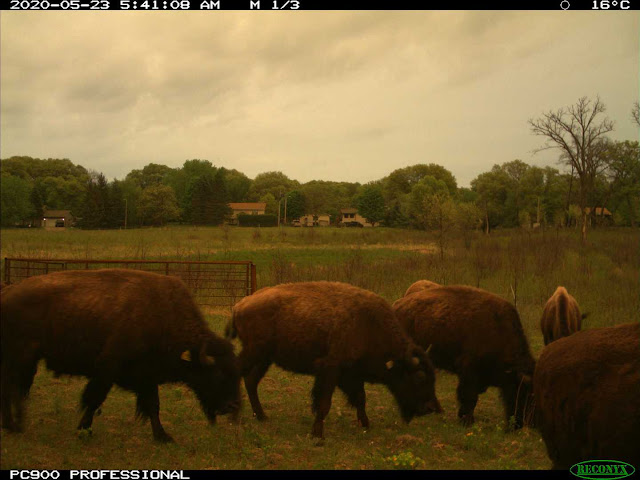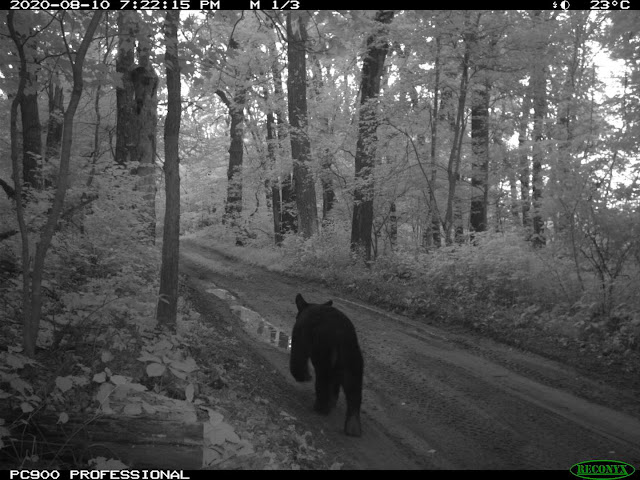New paper alert!
by Dr. Meredith Palmer
New paper alert! Eyes on the Wild trail camera data used in a cross-continental study to explore how North American wildlife can co-exist with humans.
https://onlinelibrary.wiley.com/doi/abs/10.1111/gcb.15650 (if you don't have access via this link and would like to read the full paper, email Dr. Palmer for a PDF at mspalmer@princeton.edu)
Some animals seem to thrive with people. Just think of the raccoons rustling about in your trashcan, the squirrels skittering around in the park, or the pigeons pooping all over our cities. Other animals that used to roam across North America are restricted to a few last little pockets of wilderness (you’ve probably never had to chase a mountain goat out of your backyard). As our world continues to change and become more urbanized, ecologists want to predict which animals are going to persist in human-dominated landscapes and which ones we’ll have to protect from extinction. This begs the question, what makes certain animals so successful at living with people?
From mice to moose, North American wildlife differ in a number of life history traits that allow them to thrive in different habitats. Some animals are small and breed quickly, while others grow to massive sizes and only reproduce once every couple of years. Some are behaviorally flexible and readily change their activity patterns or food preferences based on environmental conditions, while others are more evolutionarily set in their ways. In our new paper, Disturbance type and species life history predict mammal responses to humans, lead investigator Dr. Justin Suraci set out to discover the “winning combination” of traits that allowed certain wildlife to co-exist with humans.
This is a big question which requires Big Data to answer. Looking at only a handful of species from one or two locations may reveal local trends, but not the big, overarching patterns driving human-wildlife coexist. In a massive collaborative effort, Dr. Suraci combined camera trap data from more than 60 sites across North America, including our very own Eyes on the Wild data!, to look at the distribution and activity of 24 mammal species across gradients of human activity. Sites ranged from protected areas with low levels of human presence and development to urban centers dominated by people’s presence.
 |
| Bison are not generally a species we think of as living happily in urban areas; at Cedar Creek they range quite near to our neighbors' homes and yards! |
When it comes to adapting to increasing human activity, some species fare better than others. A third of the North American wildlife studied reduced their activity or moved away from urban centers, responding poorly to human presence. However, the remaining two thirds appear to survive or even thrive in areas of human disturbance. These species that were able to adapt and coexist with us had very specific traits, tending to be smaller, less carnivorous, and faster-reproducing - wildlife like raccoons, opossums, and coyotes fare better than bears, bison, and bobcats. However, there is a threshold level of human disturbance over which even some of these super-survivors just can’t cope. There is a limit to each species’ capacity to tolerate even the best of us and deer might not be moving to downtown anytime soon!
This type of comparative, continent-wide work that combines data from many different projects revolutionizes the way we can study ecological systems and uncover the complex mechanisms structuring wildlife communities. Thanks to your efforts and the work of other volunteers on sister projects, we now have a better ability to predict how humans will reshape wildlife communities based on the traits of the species that compose them. Getting the data we need to ask and answer questions on this scale takes a village, and we're so glad you're a part of ours!


OgalcerKfanru2001 Heather Wang https://wakelet.com/wake/h9t7SXZ4pPjnUGCGXC1lD
ReplyDeletefromiztralvi
Super pictures;)
ReplyDeletevensauYcul_su-1998 Katie Mitchell Sketchup
ReplyDeleteInternet Download Manager
FixMeStick
untopami
What Awesome projects and pictures.
ReplyDeleteOfarccuprot_piNewark Diana Brown programs
ReplyDeletesoftware
cobbblacdanre
What Awesome projects and pictures.
ReplyDeleteAll webseries
ReplyDelete